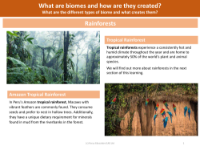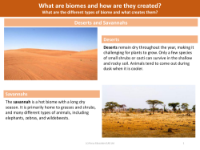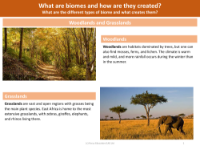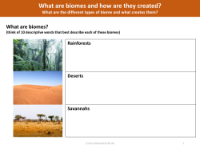Tundra - Info sheet
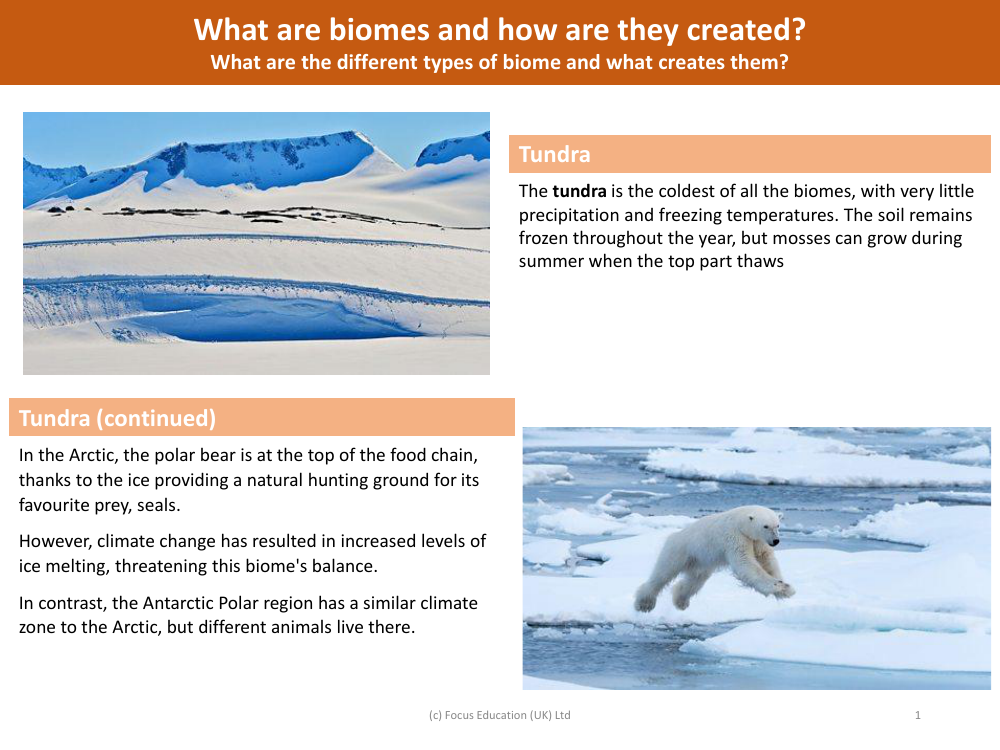
Geography Resource Description
The tundra biome stands as the planet's coldest habitat, characterised by its minimal precipitation and consistently freezing temperatures. This harsh environment features soil that is perennially frozen, known as permafrost. Despite these extreme conditions, the brief summer season allows the thawing of the upper soil layers, enabling mosses and some other hardy vegetation to grow. The tundra's unique climate and geographical features make it a distinct and challenging ecosystem for the life forms that inhabit it.
In the Arctic tundra, the polar bear reigns supreme as the apex predator, relying on the ice as its crucial hunting platform to catch seals, its primary food source. However, the escalating impacts of climate change are causing more ice to melt, posing a significant threat to the delicate equilibrium of this biome. In stark contrast, while the Antarctic Polar region shares a similar frigid climate with the Arctic, it is home to a completely different set of animal species, adapted to their own unique environment. Biomes like these are shaped by a combination of factors including climate, geography, and the presence of flora and fauna, each creating a distinct ecological community.


